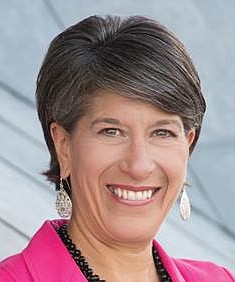After 44 years of coaching baseball, John Scolinos retired. In 1996, he asked the following questions to more than 4,000 baseball coaches at the 52nd annual American Baseball Coaches Association conference.
How wide is home plate in Little League baseball? Do you know how wide home plate is in high school, college and the major leagues?
In case you don't know, it's 17 inches.
"Seventeen inches!" he confirmed. "And what do they do with a Big League pitcher who can't throw the ball over 17 inches? They send him to Pocatello [Idaho]! What they don't do is this: They don't say, 'Ah, that's OK, Jimmy. If you can't hit a 17-inch target, we'll make it 18 inches or 19 inches. We'll make it 20 inches so you have a better chance of hitting it. If you can't hit that, let us know so we can make it wider still, say 25 inches.'
"Coaches what do we do when your best player shows up late to practice? Or when our team rules forbid facial hair and a guy shows up unshaven? What if he gets caught drinking? Do we hold him accountable? Or do we change the rules to fit him? Do we widen home plate?" Scolinos continued.
The truth is, there can be massive consequences when people fail to meet standards.
Consider this: When people donate blood, at least 15 touches are necessary to ensure its safety before the blood can be given to someone who needs it. If any one of those 15 touches are missed or incorrectly completed, it could cause serious issues for the recipient.
When it comes to building roadways with overpasses and bridges, engineers carefully calculate weight, force and stress to determine how to build the right kind of structures to accommodate traffic flow. Most bridges are designed to handle four times the anticipated capacity. It would be unacceptable for the structural engineers to say they were pretty sure they got their calculations right. One degree, plus or minus, could result in a catastrophic collapse. One degree could be the difference between life and death.
So here's the question: Is it better to bend the rules or the standards in an attempt to make children feel better about themselves, or is it more beneficial to teach children how to accomplish the goal the way it was intended to be met?
Coach Scolinos wrapped up by saying, "If you remember one thing from this old coach today, it is this: If we fail to hold ourselves to a higher standard, a standard of what we know to be right; if we fail to hold our spouses and our children to the same standards; if we are unwilling or unable to provide a consequence when they do not meet the standard; and if our schools and churches and our government fail to hold themselves accountable to those they serve, there is but one thing to look forward to We have dark days ahead.
"Coaches, keep your players - no matter how good they are - your own children, your churches, your government and most of all, keep yourself at 17 inches."
Scolinos passed away in 2009, but the wisdom he imparted over the years to players and coaches alike can still be useful in all areas of life. While times have changed, people still count on quality and safety standards for air travel, automakers, restaurants, schools, hospitals, hotels, etc. It's pretty clear that teaching people the importance of accountability starts early and in the home, but it extends far beyond that.
In fact, setting and holding to standards lets people know what to expect and where to aim, and it holds them accountable if the standards are not met. Should we expect less than that?
Julie Baumgardner is president and CEO of family advocacy nonprofit First Things First. Email her at julieb@firstthings.org.
